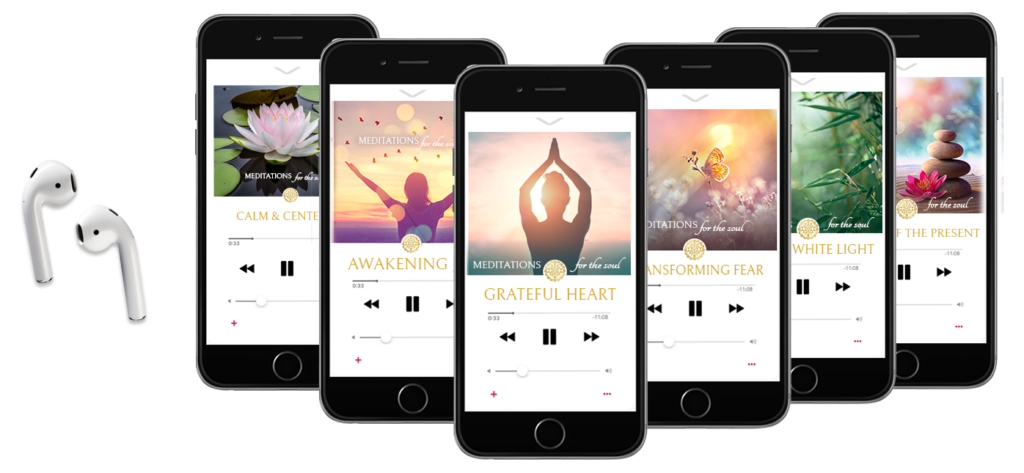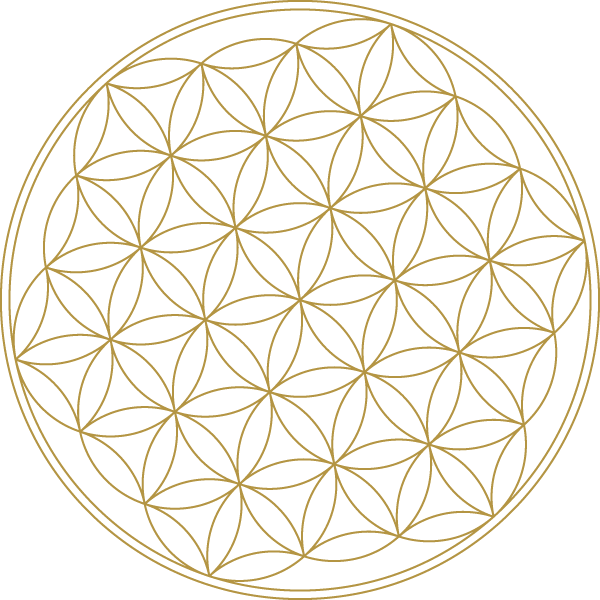Yes, You Can Meditate! 6 Most Common Obstacles in Meditation (And How to Overcome Them!)
You’ve tried to meditate… but you just couldn’t stop thinking, couldn’t quite sit still, you got bored, your back started to hurt and you started to doubt this whole meditation thing as being helpful. You came to the conclusion that your mind is just too darn busy and meditation just isn’t for you…
But congratulations! Believe it or not, you actually can and did have a very successful meditation (keep reading to learn how…) But you’re certainly not alone in feeling this way.
Along the journey of all meditators many obstacles can arise that appear to block us from finding that state of profound bliss and inner peace that meditation promises.
In this article, we’ll demystify meditation— what meditation really is (and isn’t,) you’ll discover the 6 most common obstacles to meditation and uncover the specific solutions to overcoming them to take your practice to the next level.
WHAT MEDITATION IS & ISN’T
The goal of meditation is to go beyond the mind and experience our essential nature— which is described as peace, happiness and bliss. 1
Meditation isn’t about battling the mind into making it quiet— it’s about witnessing the 70,000 thoughts the average person thinks in a day, and entering into the peaceful quietude and stillness that lies behind the thoughts.
Meditation isn’t about stopping the thoughts inside your head. It’s about observing the thoughts, disidentifying with the thoughts, and ultimately recognizing that you are not the thoughts.
6 COMMON OBSTACLES IN MEDITATION
Meditation is very simple… but simple doesn’t always mean easy! Here are 6 common difficulties you may encounter while meditation and solutions on how to overcome them.
1. BUSY MIND
If during a meditation you’ve ever been bombarded with thought, ideas, memories, desires, fears, joys, questions, worries and more… you’re not alone!
The average person things 70,000 thoughts per day— in 1 hour of meditation, you could think up to 3000 thoughts!
The good news is, thoughts actually aren’t a problem— they aren’t bad or wrong to have in meditation. They are an essential part of the process. Thoughts are only a problem when you identify with the mind and react to the thoughts that it creates.
Thoughts are only a problem, if you identify with them.
SOLUTION FOR BUSY MIND = WITNESS CONSCIOUSNESS
Remember, meditation is NOT about battling the mind into silence. It is about remaining as a witness to all thoughts,
feelings, memories— unattached, unidentified and uninvolved. Simply allow and witness the thoughts as they arise— let them come and go.
2. PAIN
If you’ve sat still in meditation for more than about 5 minutes, you’ve likely encountered a prominent force called pain. Mental pain, knee pain, back pain, head pain, heart pain… so many pains arise in meditation!
Though counterintuitive, pain can actually be a sign of progress.
Through meditation, we undergo a process of deep purification— physical, psychological and spiritual.
When a pain arises in meditation, meditation is not the cause, but rather, a mirror…
Ultimately, that pain you notice during meditation is always there, lying dormant in the body or mind. But due to our busy minds and distractions of the external world, we don’t always notice the pain until we become quiet, still and present enough with ourselves to truly feel the subtilties of our inner world.
Meditation shines the light of our awareness onto precisely what we need to “work through” most to truly heal on all levels and come into greater contact with who we really are.
SOLUTION TO PAIN = AWARENESS
- Feel it to Heal it
Rather than judging, analyzing or needing to change your experience, allow yourself to simply sit with the experience— breathe into it, remain as a witness, let it come and go.
- Reacting vs Responding: The “3 Time Rule”
Let’s be honest… most of what we experience in meditation isn’t actually pain— but rather discomfort heightened by awareness.
- Next time you feel overwhelmed by sensation, try this:
During your meditation the first time you notice pain, just notice it. Let your awareness of the sensation come and go. The second time you notice the pain, again, just notice it— the perception comes and goes. Now the third time you feel the pain, now respond to the bodies needs by mindfully adjusting your position.
Meditation isn’t a game of no pain, no gain… it’s not about suppressing, reacting, or even overcoming the pain, but a delicate balance of witnessing and responding to the pain, and ultimately dissolving it.
3. DISTRACTION
If you’ve tried meditating before, surely you’ve encountered distractions. You know… You’re doing just fine in your meditation, sitting there peacefully, watching your breath… and suddenly the neighbor decides fires up their chainsaw… or an ambulance whirls by your house, or your phone rings…
There are plenty of external disturbances that can easily pull you out of your meditation, this is why the great masters have taught us sensory withdrawal techniques called Pratyahara— to help us draw our sensory awareness from the external world, to the internal world.
Ultimately, it’s not the outer sounds or even the inner thoughts that disturb you, it is your reaction to them that causes the greatest disturbance.
SOLUTION TO DISTRACTION = INWARDNESS & NON-REACTION
- Set
yourself up for success— limit
external distractions as much possible before meditating. Silence your phone, turn
off the TV, close the door, do whatever it takes to minimize distractions.
- Sensory
withdrawal— meditation is difficult enough! Use all the
help you can get by practicing with your eyes closed, wear earplugs or play
some appropriate background softly in the background to limit external sensory
distractions.
- Accept each moment— when unavoidable distractions arise, remain as a witness. No need to analyze or judge the moment, simply notice it, accept it and allow it to be as it is.
4. RESTLESSNESS
Restlessness arises from anxiety, impatience, fear, agitation or boredom— anything that disables us from being present in the moment.
Restlessness is a condition born from a mind living in the past, dwelling in the future or any other dream-like fantasy that is not here or now.
SOLUTION TO RESTLESSNESS = PRESENCE
- Power of presence— transform restlessness into stillness through the power of simply being here, now… and somewhere else, later.
- Meditate first thing in the morning— while the mind is still fresh. Before checking emails, examining your to do list or fulfilling your responsibilities for the day.
- Trust the moment— trust that you are exactly where you need to be at that moment. There’s nowhere else you need to go, nothing else you need to do… except be in this moment and allow what is, to be.
5. FATIGUE
Have you ever nodded off in meditation? Happens to the best of us…
This can happen for a few reasons:
1. You’re lacking sleep (so your body is trying to prioritize sleep, over enlightenment… makes sense!)
2. You aren’t getting enough oxygen or prana to the brain
3. You relaxed a little too much
At the junction between concentration and relaxation, meditation happens spontaneously.
SOLUTION TO FATIGUE = CONCENTRATION
- Change your posture— change your body language to change your mind. Sit tall, with a long and straight spine.
- Tighten your hand mudra— one of the secrets behind the various hand gestures (mudra) of meditation, is its ability to act as a gauge of concentration and relaxation. If you are too concentrated, naturally your hand will be stiff and cramp up. If you’re too relaxed, your fingers will open up and the position is lost. Use a bit more strength in your hand mudra to activate the brain and concentration powers.
- Do Pranayama— do a few rounds of breathwork like Alternate Nostril Breath (Nadi Shodhana) to wake up the mind and bring fresh oxygen and prana into the body and brain.
6. DOUBT
“Nothing’s happening…”“Is this working?” “Ugh, I can’t do this. Maybe meditation just isn’t for me…”“Omg, I can’t stop thinking!”
If you’ve ever thought any of the above, you’ve experienced one of the most common obstacles to meditation— doubt.
SOLUTION TO DOUBT = TRUST
- Have faith— in yourself, in the process, in God, science or whatever force you believe in, that meditation can, will and is helping you.
Meditation isn’t a one time— poof! and your enlightened… It’s a gradual process— slow, subtle and ongoing. And the greatest benefits of meditation happen on the inside— invisible to the eye and often unperceivable the mind.
- Give your practice a higher purpose— having a higher intention, and connecting with that inner meaning each time you sit to meditate, as to why you practice can help give you clarity, purpose and trust the process.
(Bonus: if your meditation practice isn’t just about you, your health, your well-being, your peace… but for the benefit of all living beings you come into contact with!)
FEEL MORE CALM, CLEAR & CONNECTED
Meditations for the Soul: Guided Meditation Collection

These beautiful, inspiring and short guided meditations will help you sink quickly and effortlessly into a state of deep relaxation while helping you deepen your self-love, inner peace and joy at the same time.

 Root Foundations
Root Foundations